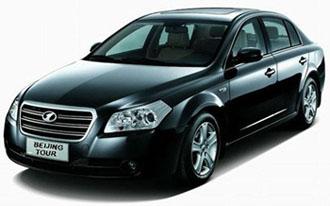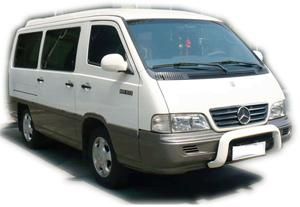| |
TOUR ITINERARY |
 |
Tour
code:
GWA-BJ-CT-04 |
|
Highlights:
• Experience Beijing’s wondrous past and promising future with a tour that includes visits to the Forbidden City, the Great Wall, the Summer Palace and the Temple of Heaven
• See what made Beijing the center of the world with a visit to the Olympic Green, and see a preview for Beijing’s future triumphs at the Beijing Urban Planning Exhibition
• Other great destinations on this tour include a trip to the Beijing Zoo and the Giant Panda house, the Lhama Temple (the best Buddhist temple outside of Tibet), and an evening’s entertainment at the Kung Fu show. To maximize comfort and convenience, for your 4 day’s tour you’ll have your own professional English-speaking guide, driver, and car
( L=lunch)
Day-by-day detailed itinerary:
Day 1 arrive in Beijing
You will fly to Beijing, and upon arrival at the airport, you will be met by your English-speaking guide. From the airport you will be taken to your hotel, the Holiday Inn Express Temple of Heaven, which is located in the heart of the city. You will have the rest of the day to unpack and unwind from your flight.
Day 2 Beijing (L)
Following breakfast in your hotel, we’ll make the short drive to Tiananmen Square. The largest public square in the world, Tiananmen Square is seen as China’s political center. Its grounds have seen some turbulent moments, from the May 4th Movement of 1919 to the political turmoil of 1989. The south of the square is marked by the Chairman Mao Memorial Hall, while the center of the square is dominated by the Monument to the People’s Heroes, an imposing 10-story granite obelisk. To the east is the National Museum of China, and to the west is the Great Hall of the People, home to China’s legislative bodies. The north of the square is dominated by the Gate of Heavenly Peace, known for its iconic portrait of Mao Zedong, and is the national emblem of China.
After walking across the street, we will enter what is perhaps the greatest attraction in China, the Forbidden City. After walking across the square we will enter the Forbidden City (known in Chinese as Gu Gong), the largest surviving palace complex and the former home of the emperors of the Ming and Qing Dynasty. The Forbidden City is one of the greatest attractions in the world. Built by the third Ming emperor between 1406-1422, the Forbidden City served as the official residence to the Emperor of China until the last emperor, Puyi, was forced to evacuate in 1924. The Forbidden City is divided into two parts. The southern section, or the Outer Court was where the emperor exercised his supreme power over the nation. The northern section, or the Inner Court was where he lived with his royal family. Consisting of 980 buildings and with 8,707 bays of rooms, the Forbidden City is the best example of classical Chinese architecture in the world, and is a wonder to behold.
After a Chinese lunch, we’ll make the short walk south of Tiananmen Square to visit the Beijing Urban Planning Exhibition Hall. The exhibition displays the great achievements of the city’s modern urban planning and development, and exhibits the splendid future of Beijing's urban development. The 16,000 square-meter floor space is distributed on 4 floor levels in the Hall, with 8,000 square meters for exhibits. The highlight of the exhibition is the large-scale model of Beijing, which takes up almost one whole floor!
Afterward, we’ll set out for the Temple of Heaven. The complex was visited by the Emperors of the Ming and Qing dynasties for annual ceremonies of prayer to Heaven for good harvest. The Temple of Heaven park is best known for the Hall of Prayer for Good Harvests, an iconic building famed for its magnificent triple-gabled circular roof. You will also have an opportunity to walk the same imperial walkway that the same emperors walked hundreds of years ago in their holy rites. You will also see Beijing’s senior citizens using the park grounds for everything from tai chi and ballroom dancing to bullwhip practice!
For the evening you will enjoy a delectable dinner of Peking Duck, Beijing’s signature culinary dish. After dinner, you’ll get to witness an entertaining spectacle of Chinese martial arts, better known as Kung Fu. You’ll then be taken back to your hotel.
Day 3 Beijing (L)
After breakfast, we’ll make the 3-4 hour drive to the Great Wall at Simatai. The Simatai section of the Great Wall is one of the few sections to retain the original appearance of the Great Wall. Incorporating a variety of characteristics of other sections of the Great Wall, Simatai also displays some unique features of its own. Simatai Great Wall was built along the steep mountain ridges, with Heavenly Ladder and Sky Bridge being the most thrilling parts. Heavenly Ladder is a steep and narrow (about 50cm/1.64ft at its narrowest point) wall that go up 85 degrees to the mountain peak, with cliffs on both sides. At its end is the Sky Bridge, which is not more than 100 meters (328 ft) long, but only 40 cm (1.3 ft) wide. When this part was being constructed, bricks were bundled on goats’ back to the mountaintop.
Our hike along the Great Wall will last about 2-3 hours, and once we are done we’ll stop for lunch. After lunch we’ll drive back to Beijing, and unwind by heading to the trendy area of Houhai, which is just north of the Forbidden City. Houhai contains many places of historic interest and scenic beauty, and remnants of old-style Beijing residences, Hutong and courtyards. Houhai is always a good place for local Beijingers' recreational life, and in the last 200 years, many governmental officers, celebrities, monks and nuns chose to build mansions, temples and nunneries in Houhai. Thus, Houhai’s attraction lies not only in its natural beauty, but also in the historical value of its architecture. The lakeshore is packed with young people chatting, drinking and generally relaxing as wood pigeons coo overhead. In recent years it has become famous for nightlife because it is home to several popular restaurants, bars, and cafes.
After our time in Houhai we’ll walk over to Nanluoguxiang, Nanluoguxiang is one of the best-preserved historical areas of downtown Beijing, as well as being one of the most chic and trendy places to hang out in the afternoons and evenings. The 768-metre-long south-north central lane, with 16 Hutong branching off the central lane, is full of interesting craft shops, relaxing cafes and trendy bars. The area has a history of over 700 years and is one of the oldest Hutong neighborhoods in the city. Following our walk through Nanluoguxiang, you’ll be taken back to your hotel.
Day 4 Beijing-depart Beijing ( L)
Following breakfast, we’ll get started on our sightseeing with a visit to the Summer Palace. The Summer Palace has the largest royal park and being well preserved, the Summer Palace is ranked amongst the most noted and classical gardens of the world. In 1998, UNESCO listed it as one of the World Heritage Sites. Like most of the gardens of Beijing, it could not elude the rampages of the Anglo-French allied force of 1860 and was destroyed by fire. In 1888, Empress Dowager Cixi embezzled navy funds to reconstruct it for her own benefit, changing its name to Summer Palace (Yiheyuan). She spent most of her later years there, dealing with state affairs and entertaining. Highlights not to be missed are climbing Longevity Hill, viewing the Empress Dowager Cixi’s extravagant Marble Boat, and talking a walk down Suzhou jie, a canal meant to resemble the beautiful river city of Suzhou.
We’ll then drive over to the Olympic Green, the center of the event that captivated the world for two weeks in August of 2008, and is where a majority of the Olympic events took place. The highlights that you will see today include the Bird’s Nest (officially known as the Beijing National stadium) and the Water Cube (the Beijing National Aquatics Center). The stadium gets its nickname from its outward design, which originated from the study of Chinese ceramics, implementing steel beams in order to hide supports for the retractable roof, thus giving the stadium the appearance of a "Bird's nest". The Bird’s Nest hosted the Opening and Closing Ceremonies, athletic events, and football final of the 2008 Summer Olympics, from 8 August to 24 August 2008. Since the Olympic’s end, the Bird’s Nest has been used to host events ranging from opera to a ski park.
The site of Michael Phelps’ Olympic triumph, the Water Cube design combines modern technologies with Chinese traditional values. In tradition, Chinese conceptualized a square Earth and a round Heaven, and this formed the design’s central theme. Moreover, the cube shape dominates ancient urban buildings. The National Aquatics Center's design is of traditional style to meet all its functional requirements. The National Aquatics Center looks like a huge blue box, from which it takes its nickname: the Water Cube. The Water Cube is blue in order to reflect sunlight. The National Aquatics Center shines in the sunlight like a pearl in water. From the inside of the National Aquatics Center, you may discover that the pneumatic cushions of all sizes are just like sea bubbles.
After lunch, we’ll set out for the Lhama Temple. Other than the temples in Tibet this is the best Buddhist temple in China. Work on the Lhama Temple originally began in 1694 during the Qing dynasty. It served as an official residence for court eunuchs. It was then converted into the home of the Prince Yong, a son of the Kangxi Emperor and himself the future Yongzheng Emperor. It was converted into a lamasery after his ascension to the throne in 1722. Today the Lhama Temple still functions as a monastery and temple of the Geluk School of Tibetan Buddhism. Walking through the temple your senses will be enveloped by the incenses and the chanting of the visiting monks and other followers. The rear Pavilion of Ten Thousand Happinesses features a 26m tall statue of the Maitreya Buddha cared from a single piece of white sandalwood. It is one of three artworks in the Lhama Temple that were included in the Guiness Book of World Records, and it is not to be missed on your visit.
Before heading to the airport, we’ll head to one more point of interest, Beijing’s Capital Musuem, which is probably the best museum in Beijing, as well as a wonderful storehouse of knowledge on the history and culture of Beijing. The Beijing Confucian Temple was its original site. In order to accommodate a larger collection and a better service to visitors, the new museum was built in December, 2001 and opened on May 18th, 2006. The Capital Museum has collected various kinds of cultural relics extensively over the past decades. Bronzes, porcelain ware, calligraphy works, paintings, coins, jades, seals, needlework, Buddhist statues are in its collection. Some of them enjoy a high reputation both at home and abroad for their rarity.
Most of the collections of the Capital Museum are those unearthed in Beijing after the foundation of the People's Republic of China. Some cultural relics even date back to the New Stone Age. In total, there are 5,622 pieces of cultural relics on exhibition in the main exhibition hall and in the oval exhibition hall.
After our time at the Olympic Green, you’ll be taken to the Beijing airport, and you will fly on to your next destination, ending your tour. If you would like to extend your stay in China, then head to our China package tours page to find out more about our great destinations and tours all over the “middle kingdom”!
|



